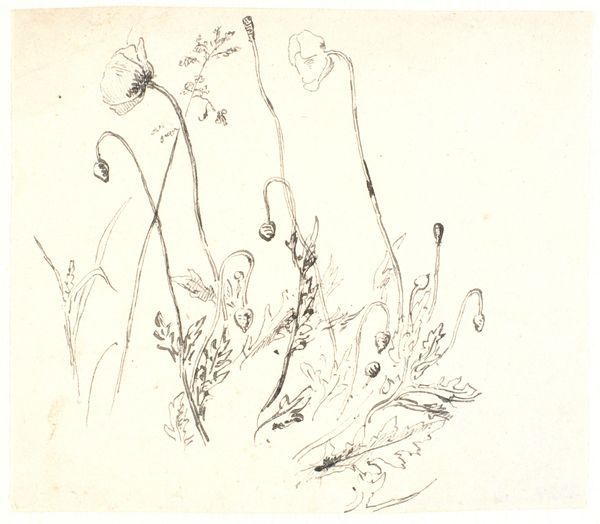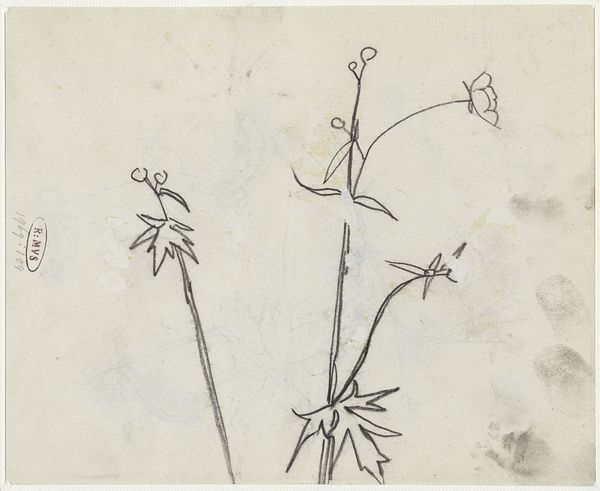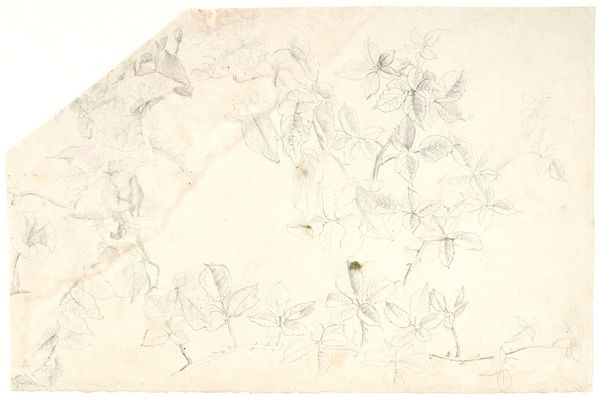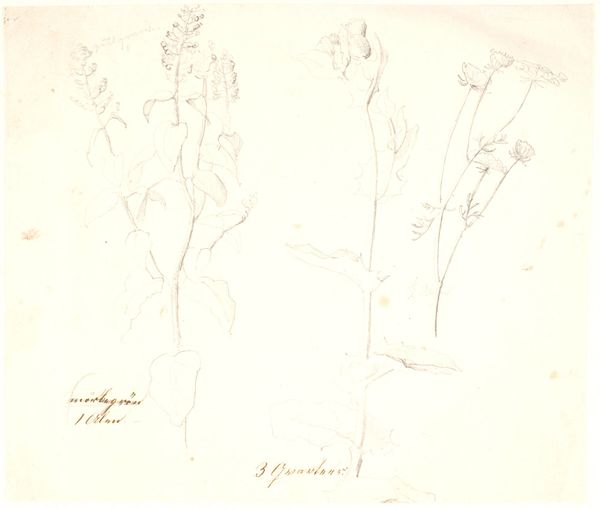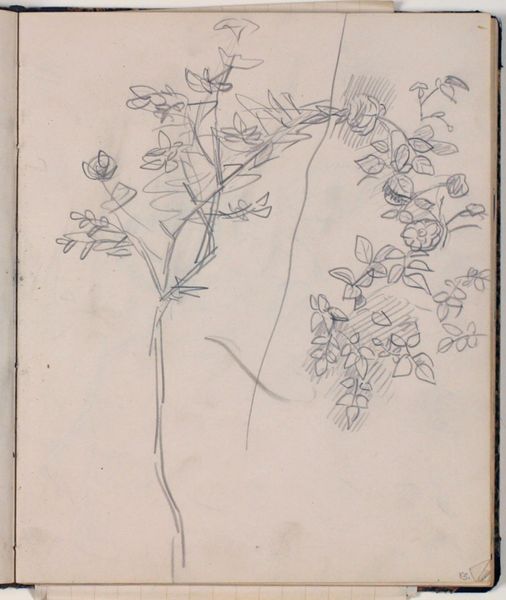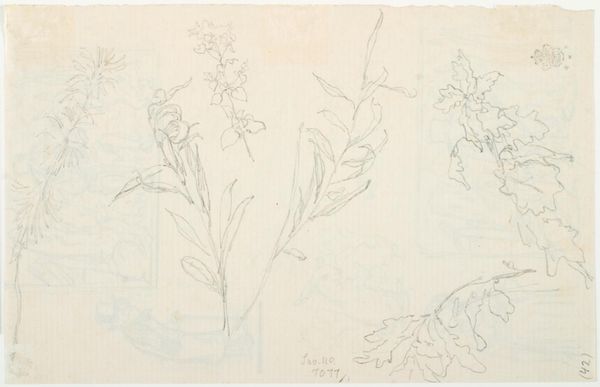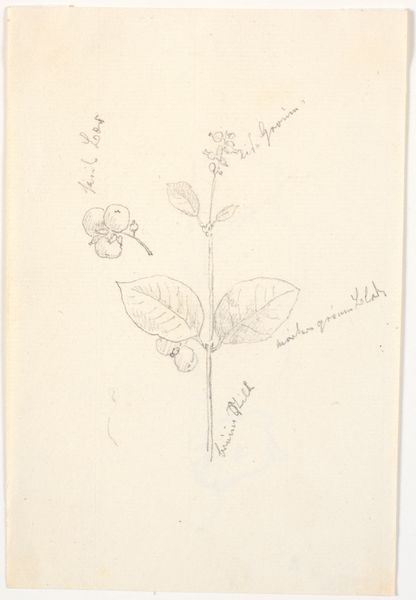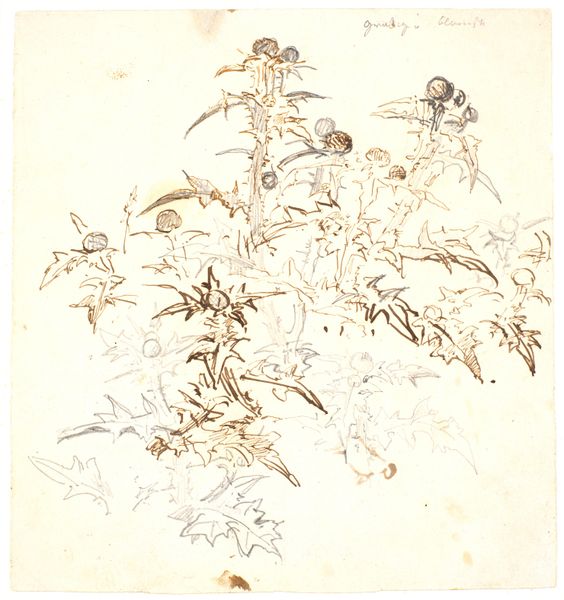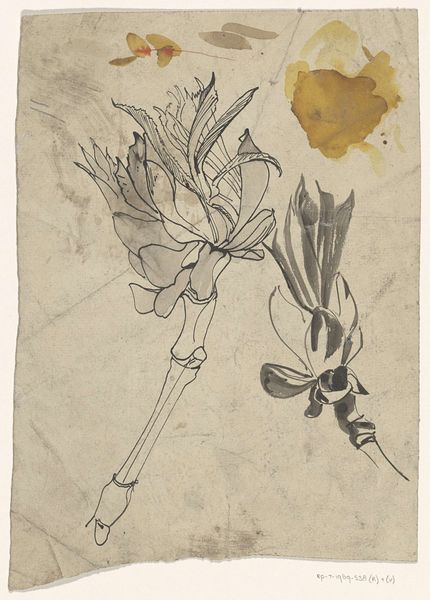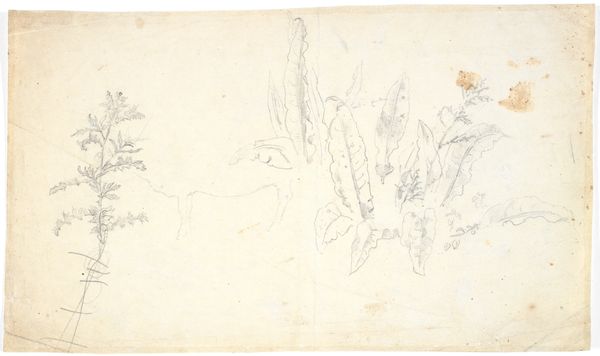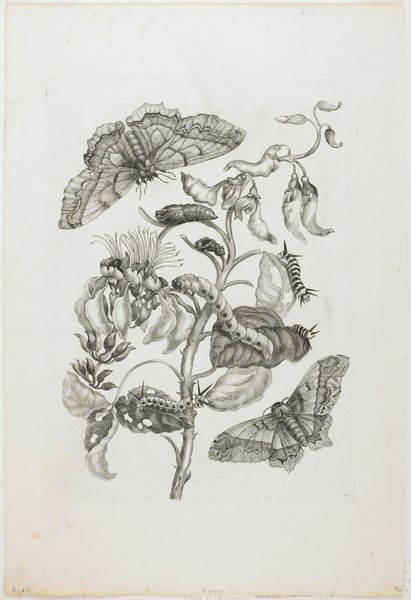
drawing, paper, ink, pencil
#
drawing
#
landscape
#
paper
#
ink
#
pencil
#
botanical drawing
#
botanical art
Dimensions: 138 mm (height) x 204 mm (width) (bladmaal)
Curator: Welcome. Here we have "Plantestudier," or "Plant Studies," by Dankvart Dreyer, likely rendered between 1831 and 1852. It’s a detailed drawing employing ink and pencil on paper. Editor: Ah, I see what feels like a whisper of a summer meadow caught in faded sepia tones. It’s the sort of botanical sketch a lovesick poet might keep tucked in a book of sonnets, you know? A delicate keepsake. Curator: Indeed. Note the economy of line. Dreyer’s technique creates depth not through shading but through the varying densities of lines. Semiotically, the open composition points beyond the immediate subject, suggesting an infinite continuation of the natural world. Editor: Absolutely, and the casual observer might mistake it for simple documentation, but there’s a tenderness present, like a secret conversation with nature. What are we seeing botanically, specifically? Violets? Grasses? Curator: We observe studies of violet plants primarily, accented by blades of grass. The visible inscriptions identify "Violette Skogger". The structure is fascinating; note the tension between botanical accuracy and the drawing's aesthetic qualities. Editor: It is compelling; it seems unfinished, a bit haunted by its own delicacy. Do you think Dreyer intended to use these studies for larger paintings? Or perhaps for teaching purposes? There's a certain pragmatic aura around them. Curator: Likely a combination of both. Such studies served as indispensable references. Beyond pragmatism, though, is also the underlying Romantic idea of understanding the divine through nature. This notion invests the drawings with greater significance. Editor: I see the potential for the spiritual there, certainly, with the quiet stillness inviting reflection. Still, as an artist, I can't help but get drawn to the sheer artistic mastery with so few tools, that's a trick of the best draughtsman. The balance is so precarious it almost aches. Curator: And yet it holds together structurally and conceptually. These drawings, viewed through the lens of formal analysis, show us how Dreyer meticulously created meaning through seemingly simple lines on paper. Editor: For me, it becomes a study of fleeting beauty and reminds one of how important it is to slow down and see. It also subtly comments on the fragility of nature. It almost makes you want to carry pencils wherever you go. Curator: A poignant reminder. Indeed. Editor: Indeed.
Comments
No comments
Be the first to comment and join the conversation on the ultimate creative platform.
